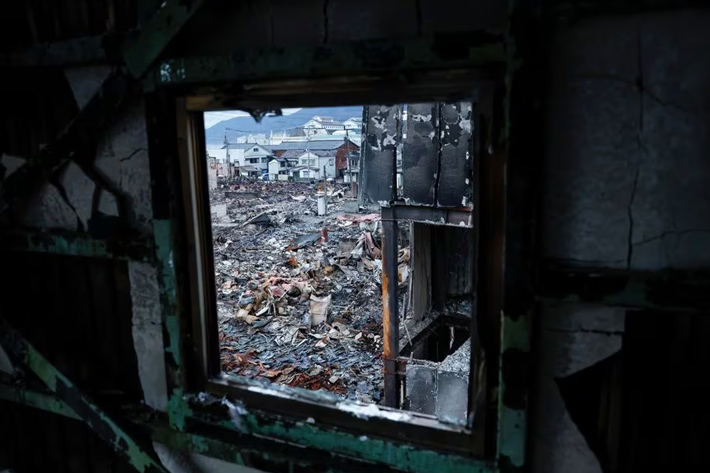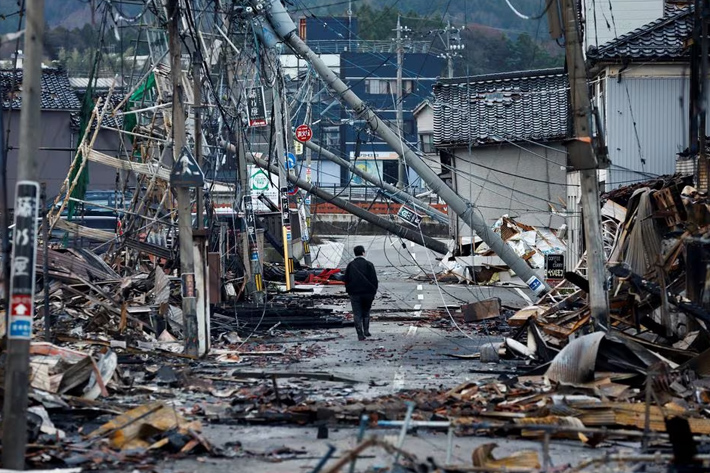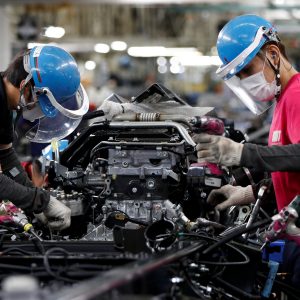Three days since a deadly earthquake shook Japan’s Noto Peninsula and brought with it an onslaught of near 600 aftershocks, rescuers are racing against the clock to find survivors among the flattened structures.
Buckled roads continue to hamper the influx of aid to evacuees who remain largely cut off from food, water, warmth, and communications amid freezing temperatures and bad weather.
The total toll on lives and industry in the region from the 7.6 magnitude quake — the strongest to strike Japan in 13 years — is far from known.
Also on AF: Ocean Freight Fees Shoot up After New Red Sea Ship Attacks
But in the small, seaside town of Wajima, the earthquake has decimated hopes of recovery in tourism, after more than two years of pandemic gloom.
Hotel chef Makoto Wakabayashi was among those in Wajima hoping for a banner year as visitors returned to the city renowned for its fisheries, lacquerware, and markets.
Those dreams came apart in minutes of violent shaking on New Year’s Day.
Among the badly damaged buildings is Wakabayashi’s employer, the seaside Hotel Koshuen.
Tourism was just making a comeback from the Covid-19 crisis, Wakabayashi said, but he worries this quake may be a knockout blow.
“It’s absolutely bad,” Wakabayashi, 62, said.
He was among some 600 people of all ages packed into the building’s three floors, where many slept on tatami mats and plastic sheets.
1000-year old market in ruins
Nearby was the nine-story Hotel Koshuen, one of the biggest accommodation centres in the city and boasting hot spring baths with views of the ocean. The upper floors were the most damaged as the force of the quake moved up the building, he said.
“Parts of walls came off and ceilings came down,” Wakabayashi said. “I believe it will take half a year to a year to fully refurbish all the guest rooms.”
Wajima, about 450 km (280 miles) northwest of Tokyo, has always been more of a draw for domestic visitors.
Just 15 minutes by foot from the Hotel Koshuen and near the evacuation centre lays Wajima’s famed “Asaichi” morning market, a 1,000-year old shopping district with some 200 stalls selling seafood, snacks and crafts.
Now much of it lays in ruin after a conflagration set off during the earthquake.

“Wajima’s morning market is one of Japan’s top three,” Wakabayashi said.
“The fire practically destroyed it, as well as the houses of many who work there, just when the crab season is about to arrive.”
The veteran chef counts himself luckier than many Wajima residents who lost their homes, as he lives in an apartment provided by the hotel.
He endured a substantial cut in wages during the pandemic, as both he and his employer held out for a recovery in tourism.
“Customers were bound to come back following the end of the pandemic,” Wakabayashi said. “But now, hotels need to do costly repairs. I’m not sure if they’ll be able to keep their employees.”
More tourist hubs hit
Tourism was a bright spot for the world’s third-biggest economy last year as infection controls were lifted and the weak yen lured foreign travellers. Inbound arrivals in October exceeded levels in 2019 for the first time since the pandemic clamped down international travel.
Apart from Wajima, other tourist hubs in the region have also been hit.
In nearby Kanazawa, a popular tourist destination, images showed the remnants of a shattered stone gate strewn at the entrance of a shrine as anxious worshippers looked on.
The tremor was also felt in the mountains of neighbouring Nagano prefecture.
“The snow from the electric wire (came) down, and also from the roof it fell down and all the cars are shaking, and so everybody was panicked,” Jonny Wu, a Taiwanese tourist visiting Nagano for a skiing holiday.
Other businesses impacted
Tokyo Stock Exchange on Thursday observed a minute of silence on Thursday instead of ringing a bell to mark the opening of trade, out of respect for those who died in the earthquake and a separate accident at Tokyo Haneda airport, where five Coast Guard members were killed en route to deliver aid.
Japanese Prime Minister Fumio Kishida pledged on Thursday to tap roughly 4 billion yen ($28 million) of the national budget for disaster relief.
Meanwhile, Japanese manufacturers are also gauging the impact of the quake on their production lines.
Nippon Steel and semiconductor-maker Toshiba have shut down their subsidiaries in the region, Nikkei Asia reported. Both said they were yet to decide on when to resume operations.
Display makers Japan Display and EIZO, as well as semiconductor firm Kokusai Electric, said they were repairing damaged factory facilities. Chip material maker Shin-Etsu Chemical said its plant in Niigata restarted part of its operations on Wednesday.
Two nuclear power plants in the region have also reported minor damage.
The quake comes at a sensitive time for Japan’s nuclear industry, which has faced fierce opposition from some locals since the 2011 earthquake and tsunami that triggered nuclear meltdowns in Fukushima. Whole towns were devastated in the disaster.
Japan last week lifted an operational ban imposed on the world’s biggest nuclear plant, Kashiwazaki-Kariwa, which has been offline since the 2011 tsunami.
- Reuters, with additional inputs from Vishakha Saxena
Also read:
Japan Looking to Trim Budget for First Time in 12 Years
Japanese PM Announces a Return to Nuclear Power
Japan to Allow Fukushima Water to Be Pumped into Sea
Japan PM Kishida’s Sushi Stunt Amid Fukushima Water Row – Yahoo






















